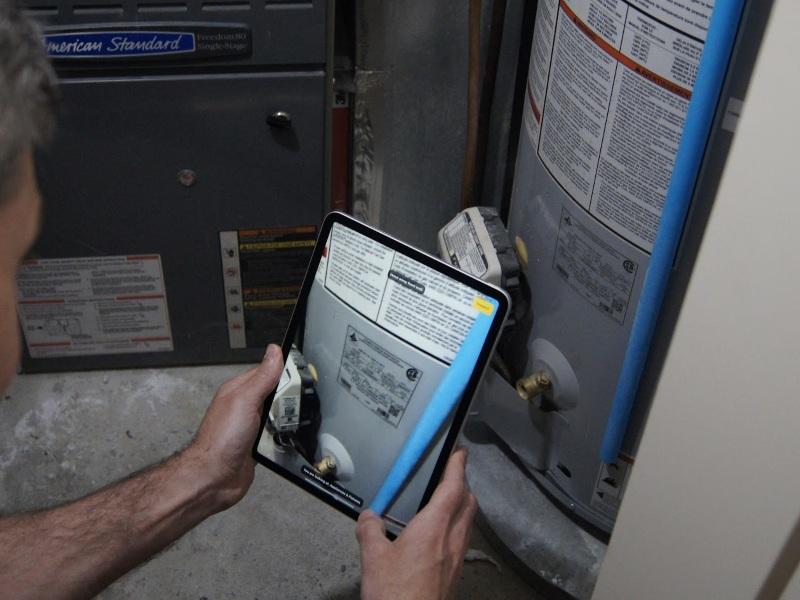
Canadian commercial real estate services firm Avison Young joined its global peers with a Paris-aligned climate pledge made at the World Economic Forum (WEF) that will focus on tackling building emissions.
It committed to halve its building-related greenhouse gas emissions by 2030 and reach net-zero building emissions by 2050. The 2050 pledge keeps Avison Young on track with the Paris Climate Agreement.
"Having that tangible target that is a business cycle away, or leasing cycle away. Most organizations now will have a five-year lease commitment. So if you think about the decisions we're taking now, they will impact on our interim target of 50 per cent by 2030,” Jon Gibson, a principal and global director of ESG at Avison Young, said.
Other companies which made the January commitment were Edge, GPFI Group, Montreal-based Ivanhoé Cambridge, JLL, Majid Al Futtaim Properties, Schneider Electric and Signify.
Buildings make up 38 per cent of all energy-related greenhouse gas emissions.
These new commitments mark a "slightly expanded scope" from its August 2022 target of net-zero carbon emissions for its global workplaces by 2040, with at least a 50 per cent reduction by 2030. The new target "remains complimentary to our existing target.
Avison Young, headquartered in Toronto, has over 100 offices in 15 countries with over 5,000 employees. The company offers consulting, advisory, lease administration, investment and asset management, and mortgage services. In the U.K., the firm has had a sustainability strategy since 2007, and it has been a member of the Canadian Green Building Council for over 15 years.
Achieving Avison Young’s new commitment
Avison Young joined the WEF in 2021 and adopted its 10 principles, developed in collaboration with Chicago-based commercial real estate and services company JLL.
According to a release, the WEF’s 10 Green Building Principles include steps like measuring a carbon footprint, tracking Scope 3 emissions, driving energy optimization and utilizing high-quality carbon credits.
The first principle is to measure a “robust carbon footprint.” While Avison Young’s 2022 ESG report is slated for a May release, in 2021 the company reported zero tonnes of carbon dioxide equivalent for Scope 1 emissions and 4,461.8 tonnes of carbon dioxide equivalent in Scope 2 emissions.
“When you start to look at a business like ours, we don't have any products. So our emissions are created through the buildings that we occupy and lease, and the travel that we do as an advisory business,” Gibson said. “So when you start looking into the Scope 3 emissions, it becomes very interesting, because that's where a lot of our emissions are housed.”
In discussing its original target with SustainableBiz, the company had implemented several measures at its U.K. offices, including a carbon literacy training program for employees, renewable energy tariffs, automatic meter reading and financial tools to help employees acquire electric vehicles.
More recently Gibson also mentioned installing motion sensors in every retrofit or new building to better optimize heating and cooling when no one is present.
How Avison Young will reduce Scope 3 emissions
While acquiring the full breadth of Scope 3 data remains a challenge, Gibson stated the company’s travel agent now includes carbon data for airplane, train and car trips, excluding commuting. Avison Young is also encouraging businesses to dig more into their Scope 3 emissions.
Avison Young has also been conducting more research into its embodied carbon usage, from the types of materials used to the quantity.
Gibson acknowledged there are issues around the adoption of carbon credits.
“Offsetting is quite a grey area of best practices,” he said. “However, whilst we're on this trajectory of reducing emissions, and there are still going to be residual emissions . . . assume we have to use concrete or cement in buildings or steel. They have right now and for the foreseeable future, have emissions in them.”
Gibson’s colleague Brandy Burdeniuk, Avison Young’s director of ESG in North America, had previously told SustainableBiz “the ship had sailed” on achieving these targets mainly through entirely new net-zero or energy-efficient developments. Gibson reaffirmed that focus as part of Avison Young’s strategy.
“The expression I use is that it's a leasing cycle. It's not even a development cycle,” he said. “Existing buildings need to be transformed and are being transformed through retrofits.”
Looking ahead in ESG
As a real estate advisor, Gibson sees areas where Avison Young can influence building development in a more green direction, which he called green clauses.
“Before we've signed the lease, we still have some considerable power to leverage with negotiations with building owners and landlords,” he explained. “So we can try and write into our lease that either from day one or a point in time, we'll reach 100 per cent renewable energy, and that's a target of ours.”
For the 2022 ESG report, he expects to see more accurate data across all three Scopes, although Scope 3 is “not quite there yet” in terms of being able to realize savings. According to Gibson, it's possible to achieve 15 to 20 per cent emissions reductions simply from optimizing space and activity, and so he also expects targets and reduction policies for travel.
Regarding Scope 3, he singled out the need to look more into Avison Young’s supply chain and procurement. He stated Scope 3 emissions could comprise up to 85 per cent of a typical organization’s emissions.
All companies which made the WEF commitment will focus on year-over-year reductions, Gibson said.
“As long as that trajectory is downward, in combination over time and it's on target, we're absolutely fine,” he said. “What we don't want to be doing is doing a sort of step-wise approach whereby we're getting complacent, or we're not seeing the downward trend.”










